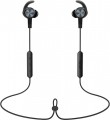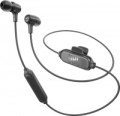Features
This parameter is indicated only for specialized models that are not related to “ears”
for general use. Nowadays, in headphones you can find the following specialization options:
gaming,
for active sports,
office,
monitor(aka studio),
for DJs,
for children's,
for sleep. Here is a more detailed description of these varieties:
- Gaming. Headphones designed primarily for use in games - primarily with PCs and laptops (a separate type is available for consoles, see below for details). Externally they stand out primarily due to their design - usually quite bright and aggressive. Most of these models have an overhead design, most often in a full-size “Over Ear” format (see “Design”) - this provides maximum immersion into the gaming. There are other design options, but noticeably less frequently. An almost mandatory part is a microphone - for voice communication in online games. In addition, most multi-channel models fall into this category (see “Sound”) - such sound is most important for games.
— For active sports. Headphones good for sports. Such devices must, firstly, have additional fixation in the ears or on the head so as not to change their position during active movements; secondly, do
...n’t be afraid of sweat (and ideally, rain, snow and other precipitation). With rare exceptions, headphones for active sports do not have a wire that could create inconvenience when moving. Sports headphones include earbuds models, earbuds, and some on-ear headphones. They share key character traits - a secure fit and at least some degree of IP water resistance (see "Protection (IP) Level").
- Office. Office headphones are designed for consultants, support operators and other employees who constantly have to deal with voice communications over the phone or the Internet. Accordingly, one of the main features in such models is the presence of a microphone. Also among office headphones, models for one ear are very popular (see “Sound - mono”), which allow you to hear both the interlocutor on the line and the surrounding environment at the same time. Many “ears” for this purpose use a USB connection (see “Connection”) - in the expectation that inexpensive office computers may not have specialized audio outputs at all. In this case, a small control panel for working with IP telephony can be provided directly on the USB plug; it allows, in particular, to accept and reject calls. There are also wireless models (usually with a connection via a radio channel, less often via Bluetooth), as well as specialized solutions connected to telephone sets using specific connectors.
— Monitor (studio). Headphones designed for use in professional sound recording and when setting up audio equipment. They are made only wired. However, the key feature of such models is different: they have the most even frequency response, which gives almost the same sound volume in all frequency bands, and a wide operating range, often exceeding the limits of frequencies audible to humans. Thanks to this, headphones for this purpose are able to clearly identify all the flaws in the sound signal - including nuances that are not noticeable on traditional “ears”; Such capabilities are indispensable in professional work with sound. On the other hand, for the same reason, there is no point in using monitor models for everyday listening to music: they not only reveal various shortcomings of the recording, but also give the sound a specific coloring that is unusual and even unpleasant for the average user.
— For DJ. Headphones originally intended for use by professional DJs when mixing tracks. In many ways they are similar to the monitor ones described above - in particular, they have a very smooth frequency response, providing the most reliable sound, and a wide frequency range. In addition, DJ headphones are usually made in a closed acoustic design and generally have high quality sound insulation, which allows you to maintain good audibility even in quite noisy environments.
- For children's. They differ from “adult” models primarily in appearance - both in smaller sizes and (in most models) in their characteristic bright design. In addition, children's's hearing is more sensitive to loud sound, and too high a volume is extremely undesirable for a child (including for psychological reasons). In light of this, children's's headphones may have corresponding features - for example, slightly reduced sensitivity, which does not allow the sound to be “boosted” to a high level, or a volume limiter, which can only be controlled by an adult.
- For sleep. Miniature headphones of a special anatomical shape, which allows you to calmly fall asleep lying on your side without discomfort in the ear. To reduce ambient noise levels, they are usually designed with passive noise reduction. These headphones can be used both for listening to music and for broadcasting white noise, nature sounds or waves. Advanced models also monitor sleep quality, and the alarm function turns on a wake-up melody at the appointed time. Such headphones are often called electronic earplugs.Impedance
Impedance refers to the headphone's nominal resistance to AC current, such as an audio signal.
Other things being equal, a higher impedance reduces distortion, but requires a more powerful amplifier — otherwise the headphones simply will not be able to produce sufficient volume. Thus, the choice of resistance depends primarily on which signal source you plan to connect the "ears". So, for a portable gadget (smartphone, pocket player), an indicator of
16 ohms or less is considered optimal,
17 – 32 ohms is not bad. Higher values —
33 – 64 ohms and
65 – 96 ohms — will require quite powerful amplifiers, like those used in computers and televisions. And models with a resistance of
96 – 250 ohms and
above are designed mainly for Hi-End audio equipment and professional use; for such cases, detailed recommendations for selection can be found in special sources.
Sensitivity
Rated headphone sensitivity. Technically, this is the volume at which they sound when a certain standard signal from the amplifier is connected to them. Thus, sensitivity is one of the parameters that determine the overall volume of the headphones: the higher it is, the louder the sound will be with the same input signal level and other things being equal. However, we must not forget that the volume level also depends on the resistance (impedance, see above); moreover, it is worth choosing “ears” for a specific device first by impedance, and only then by sensitivity. In this case, one parameter can be compensated for by another: for example, a model with high resistance and high sensitivity can work even on a relatively weak amplifier.
As for specific figures, headphones with indicators of 100 dB or less are designed mainly for use in a quiet environment (in some similar models, the sensitivity
does not exceed 90 dB). For use on the street, in transport and other similar conditions, it is desirable to have more sensitive headphones — about
101 – 105 dB, or even
110 dB. And in some models, this figure can reach
116 – 120 dB. and even
more.
It is also worth noting that this parameter is relevant only for a wired connection according to the analogue standard — for example, via a 3.5 mm mini-
...jack. When using digital interfaces like USB and wireless channels like Bluetooth, the sound is processed in the built-in headphone converter, and if you plan to mainly use this kind of application, you can not pay much attention to sensitivity.Speaker size
The diameter of the speaker installed in the headphones; models with multiple drivers (see "Number of drivers"), usually, the size of the largest speaker is taken into account, other dimensions can be specified in the notes.
In general, this parameter is relevant primarily for over-ear headphones (see "Design"). In them, emitters can have different sizes; the larger it is, the more saturated the sound is and the better the speaker reproduces the bass, however, large emitters have a corresponding effect on the dimensions, weight and price of the headphones. But in-ear "ears" and earbuds, by definition, have very small speakers, and rich bass in them is achieved due to other design features.
Multipoint
A technology used in Bluetooth models (see "Connection") that allows the headphones to connect to multiple devices at the same time. Thanks to this, you can, for example, listen to music from a laptop, and when a call comes in on a mobile phone, switch the headphones to a conversation. This technology has its own characteristics for different manufacturers, and therefore, if the
multipoint function is critical for you, you should separately clarify the details of its operation in the selected model.
Headphone battery capacity
The capacity of the battery installed in the headphones of the corresponding design (see "Power").
Theoretically, a higher capacity allows to achieve greater battery life, but in fact, the operating time also depends on the power consumption of the headphones — and it can be very different, depending on the characteristics and design features. So this parameter is secondary, and when choosing it is worth paying attention not so much to the battery capacity, but to the directly claimed operating time (see below).
Operating time (music)
The declared operating time of headphones with autonomous power supply (see above) when listening to music on a single battery charge or a set of batteries.
As a rule, the characteristics indicate a certain average operating time in music listening mode, for standard conditions; in practice, it will depend on the intensity of use, volume level and other operating parameters, and in models with replaceable batteries - also on the quality of specific batteries. However, based on the stated time, you can fairly reliably assess the autonomy of the selected headphones and compare them with other models. As for specific values, relatively “short-lived” devices have a battery life
of up to 8 hours, a figure of
8 – 12 hours can be called quite good,
12 – 20 hours – very good, and in the most “long-lasting” headphones the operating time can
exceed 20 hours.
Charging port
The type of connector used to charge the built-in battery of the headphones, or more precisely, to connect an external charger. The role of such a device can be played by a network or car adapter, a power bank, or even a USB port of a PC or laptop (if there is an appropriate cable). At the same time, in true wireless models (there are
with a leg,
without a leg,
with an ear mount and
clips (Clip-on)), the "charger" cable is connected to a special docking station, where the "ears" are placed during charging (while the station itself usually has its own battery and can also work as an autonomous power bank). And in wireless and combined solutions of a more traditional design, the charging input is often located on the body of the headphones themselves. As for the connectors, the most common options are the following:
—
microUSB. A smaller version of the USB connector, created for portable devices. It appeared quite a long time ago, but it has not lost its popularity in our time, and is used by the absolute majority of manufacturers.
—
USB C. A miniature USB connector, positioned, among other things, as a potential successor to microUSB. Unlike its predecessor, it has a two-sided design, thanks to which the plug can be inserted into the socket from either
...side. It is still relatively rare, but the situation is likely to change in the coming years.
— Lightning. Apple's proprietary connector. Like USB C, it has a two-sided design, and is somewhat more convenient and reliable, but the use of Lightning is limited to products from Apple itself and its Beats brand.Magnetic mount
Magnets in the earbuds allow you to connect them together for easy storage and prevent tangling of wires. Another noteworthy implementation of the
magnetic mount is pausing music playback when the headphones are pulled out of the ears and magnetized to each other. True, such an opportunity is found only in some copies of the headphones.

